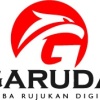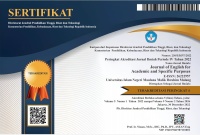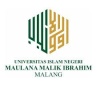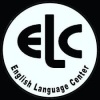Author Guidelines
Authors are HIGHLY recommended to follow these guidelines to prevent publication delay and possible rejection.
All manuscripts submitted to JEASP must follow the new guidelines in APA 7th edition. Click on this link for details:
https://canberra.libguides.com/referencing/apa
The language use should be inclusive and bias-free such as gender, sexual orientation, disability, racial and ethnic identity.
Authors:
are NOT more than FIVE authors. All the authors' contributions should be stated in Acknowledgement, which is placed in the section-after-conclusion and implications of your manuscript.
Abstract:
- should start with the essential issue/phenomenon to be discussed.
- must significantly be written in a clear theoretical background to gain the objective(s) of this study or answer research question(s). In relation to this research question, the study uses a method in a way of answering the question.
- indicates a sufficient highlight of findings and discusses them in the relevant theoretical framework to answer the questions
- significantly contributes to the intended disciplines in the focus and scope of JEASP,
- illustrates novelty/originality that informs what is new and how it interprets to the existing knowledge, and
- summarizes main points followed by implication(s) of this study.
- should be typed in a single paragraph and consisted of between 200 and 250 words. (Garamond, Font 11, justified, single-spaced).
Keywords:
between three and five keywords should be written. Avoid long phrases consisting more than three words. Take two or three keywords from the title. Use commonly Google searchable terms for the keywords.
INTRODUCTION (1500 – 2000 words)
Each paragraph begins with the first line indented 1 cm, one line-spaced, Garamond, Font 12. However, never leave a space between paragraphs.
The introduction starts with social facts found in community why it changes from one to another, or it has a tendency in which a situation is generally changing or developing, or it is disputable due to discussion about a subject where there is a disagreement, or it shows crisis in which a time of great danger, difficulty, or uncertainty when problems should be solved or important decisions must be made.
Secondly, the paragraph of this introduction conveys general literature reviews providing that previous research has not yet discussed a subject/object; therefore, this study presents the discussion.
Thirdly, the paragraph of this introduction informs readers what to gain an objective(s) of this study or to answer research question(s).
Fourthly, the paragraph of this introduction has hypothesis or arguments to examine an idea, subject, or piece of work very carefully to forecast the answers of underlying each research question.
Fifthly, in this part of introductory paragraphs, authors should state what a specific theoretical ground is presented and followed by a relevant conceptual framework. Variables, then, may have been identified within the framework to go further details. The issue/phenomena may be based several indicators to finally argue a source of basic reasonings. The paragraph can be extended into five other paragraphs to show details of what each conceptualization and categorization of the particular theory, variables, and indicators are illustrated.
In summary, the introduction should state the theoretical bases of the work at the end of the introduction section. Beforehand, authors should provide an adequate background and short literature review in order to record the existing solutions/method, to show which is the best of previous research, to show the main limitation, to show what to achieve (to solve the limitation), and to show the scientific merit or novelties of the paper. Avoid a detailed literature survey or a summary of the findings.
METHOD (500 – 1000 words)
The method initially should inform readers what, why, and how to do with the object of either individuals, groups, organizations, institutions, locations, artefacts, or events.
Then, the paragraph should state the method in a way of either quantitative, qualitative, or mixed-method design in the research application.
The next paragraph is determined by data source taken from informants, respondents, participants, texts, visuals, recordings, and secondary sources.
The following paragraph is that how data is collected in the variety of observations, interviews, questionnaires, dialogues, and forum group discussions.
Finally, the paragraph should end up with data analysis which requires analysis steps into data reduction, data display, and data verification. Data analysis shows each phase of analysis insofar as the use of analysis methods, such as content analysis, discourse analysis, and interpretations.
FINDINGS AND DISCUSSION (2500 - 3000 words)
Findings should be clear and concise. They should summarize (scientific) findings rather than providing data in a great detail. Please highlight differences between your results or findings and the previous publications by other researchers’. For instance, from the data and the process of analysis, it can be found that for EFL teachers, literary works, especially traditional narratives text, with good knowledge and critical thinking, can be a way to sharpen critical literacy.
The discussion should explore the significance of the results of the work, not repeat them. The combined Findings/Results and Discussion section is appropriately needed to avoid extensive citations or quotations from and discussion of published literature. In discussion, it is the most important section of your article. Here you get the chance to sell your data. Make the discussion corresponding to the findings, but do not reiterate them. You should begin with a brief summary of the main scientific findings (not experimental results). The following components should be covered in discussion: How do your results relate to the original question or objectives outlined in the Introduction section (what)? Do you provide interpretation scientifically for each of your results or findings presented (why)? Are your results consistent with what other investigators have reported (what else)? Or are there any differences?
CONCLUSION AND IMPLICATION(S) (500 - 1000 words)
Your conclusion should answer the objectives of research. It shows how your work advances in the field from the present state of knowledge. Without a clear conclusion, reviewers and readers will find it difficult to judge the work, and whether or not it merits publication in the journal. Do not repeat the Abstract sentences, or just list experimental results. Provide a clear scientific justification for your work, and indicate possible applications and extensions. You should also suggest future experiments and/or point out those that are underway. Finally, identify your purpose of your research implications within a correlated relevant type of implication of your research findings.
Purpose of Research Implications. Research implications explain the consequences, effects, or significance of research findings. They connect the results of the research with real-world impact and provide insights into how these findings/results can be applied in practice, policy, further research, or theory. Implications help answer the question "what does it mean?" and demonstrate the contribution of the research to a specific field of study.
Correlation with Research Findings. Implications must be directly related to the research findings and based on the data obtained. They should demonstrate the impact on the specific field or topic of research. Evidence-based implications will provide credibility and validity to the research.
Types of Implications are practical implications, theoretical implications, social and ethical implications, policy implications, and future research implications,
ACKNOWLEDGEMENT
Recognize those who contributed in your research, especially co-authors and funding supporters of your research. Include individuals (including your co-authors, e.g. the second author, the third author, the fourth author, and the fifth author) who have contributed their knowledge and experience in your study. What they have written in the study should clearly be acknowledged in a descriptive sentence.
For instance (co-authors), the second author designed the research method. The third author collected data through field study. The fourth author conducted a thorough analysis in a way of analysis steps to the application of complete analysis method. The fifth author proofread this study and edited minor errors found in the use of punctuation, a number of sentences and paragraphs.
For example (funding supporters and reviewers of this paper and the research), it would not have been possible without the exceptional support of our colleagues in English Language Education Department, Universitas X, Jakarta Indonesia. Their fervor, acquaintance, and rigorous attention to detail have been a stimulus and kept our work on track from the first encounter to the final draft of this paper. We are also grateful for the insightful comments offered by the anonymous peer reviewers. The generosity and expertise of one and all have improved this study in innumerable ways and saved us from many errors; those who inevitably remain are entirely our own responsibility.
REFERENCES
Use APA Citation 7th edition for in-text citations and the reference list. For in-text citations, use the author’s name and year (Author, 2012), and if there are direct quotes, then provide the page number (Author, 2010, p. 24 or pp. 24-26). If you are citing more than one reference, put them in alphabetical order (Alpha, 2009; Beta, 2016). For a reference with up to five authors, use all the names in the first instance (Author1, Author2, Author3, Author4, & Author5, 2017), and then use the first author et al. subsequently (Author1 et al., 2017). Do not use footnotes.
(Use A Reference Manager (e.g. Mendeley is recommended) of APA Style 7th Edition.)
(Garamond, Font 12, Justified, Single-spaced, Add Space Before the Last Paragraph in Conclusion and Implications)
Examples
Book
Broughton, G. (2003). Teaching English as a foreign language. Routledge.
Article with Many Authors
Bunga Febriani, R., Rukmini, D., Mujiyanto, J., & Yuliasri, I. (2022). Lecturers’ Perception on the Implementation of Approaches to Teaching Literature in EFL Classrooms. Studies in English Language and Education, 9(1). https://doi.org/10.24815/siele.v9i1.21035
Edition
Goldstein, E. B. (2024). Sensation and perception (8th ed.). Wadsworth Cengage Learning.
Online Books
Brown, J. D. (2009). Research ethics in New Zealand: A student guide. https://doi.org/10.1000/182
Maclean, H. (1932). Nursing in New Zealand: History and reminiscences. http://www.nzetc.org/tm/scholarly/tei-MacNurs.html
Journal Article
Muniandy, J. (2012). Teaching and learning constructive listening skills: A study among EFL learners. Journal of Social Sciences and Humanities, 7(1), 149-160.
Journal Article with DOI
Agustina, A. (2021). Indeks Aktivitas Literasi Membaca Peserta Didik Dan Prestasi Akademik: Studi Korelasi Pada 34 Propinsi Di Indonesia. Jurnal Analisa Pemikiran Insaan Cendikia, 4(2). https://doi.org/10.54583/apic.vol4.no2.70
Web Page
Laudano, M. D. (1981). Teaching poetry in new formats to intermediate-grade students. https://teachersinstitute.yale.edu/curriculum/units/1981/4/81.04.08.x.html. Accessed in 12 May 2024
Encyclopedia Entry Online
Merriam-Webster. (n.d.). Non sequitur. In Merriam-Webster.com dictionary. Retrieved January 7, 2020, from https://www.merriam-webster.com/dictionary/non%20sequitur
Magazine Article
Jianying, H. (2007, July). Qing tomb enigmas. China Today, 56(7), 72–76.
Online Magazine Article
The domino effect. (2008, July 3). The Economist. http://www.economist.com/node/11667810?story_id=11667810
Newspaper Article
Howe, J. (2007, November 16). Manawatu worth $8.1b. Manawatu Standard, p. 1.
Online Newspaper Article
Government urged to act on child poverty. (2008, August 7). New Zealand Herald. http://www.nzherald.co.nz/section/1/story.cfm?c_id=1&objectid=10525782
Conference & Symposium Proceedings
Published Paper in A Book
Bowker, N., & Tuffin, K. (2002). Users with disabilities' social and economic development through online access. In M. Boumedine (Ed.), Proceedings of the IASTED International Conference on Information and Knowledge Sharing (pp. 122–127). ACTA Press.
Unpublished Paper
Chan, N. N., Walker-Gleaves, A., & Remedios, R. (2013, June 16-19). Ubiquitous learning: The lived experience of students learning with smartphones [Session #2: Innovative online learning environments]. Sixth Conference of MIT’s Learning International Networks Consortium (LINC), Cambridge, Massachusetts.
Thesis or Dissertation
Bowker, N. I. (2003). What it means to be online for people with disabilities [Unpublished doctoral dissertation]. Massey University.
Online Thesis or Dissertation
Mason, R. L. (2011). Learning at work: A model of learning & development for younger workers [Doctoral dissertation, Massey University]. Semantic Scholar. http://mro.massey.ac.nz/handle/10179/2862


















